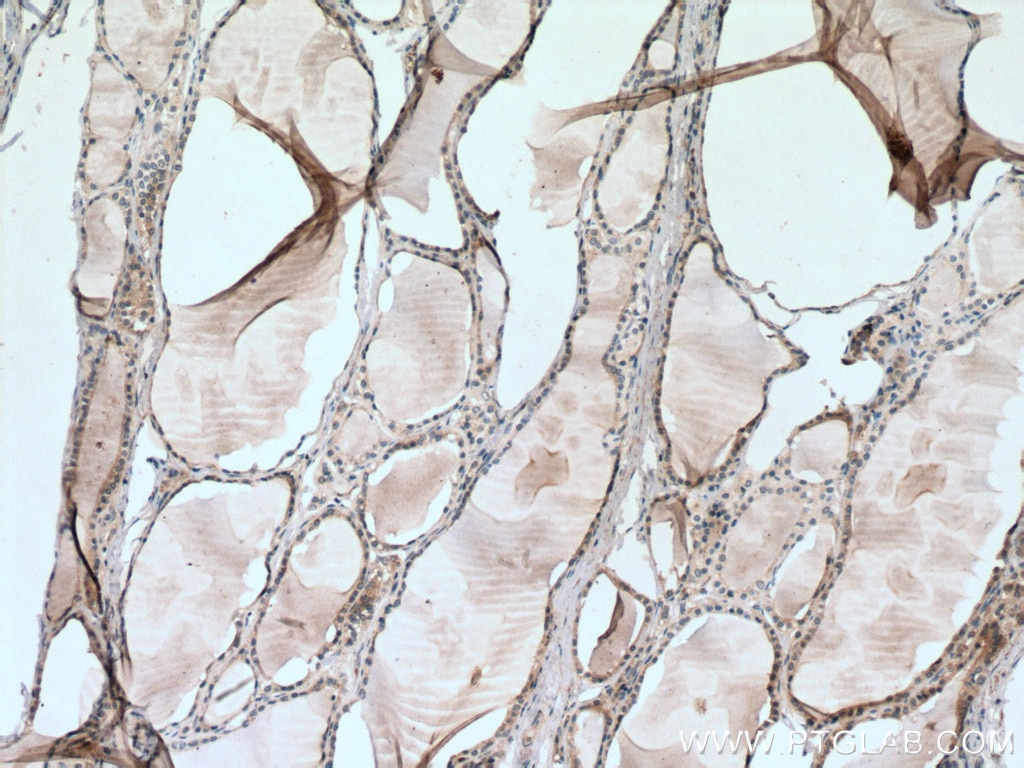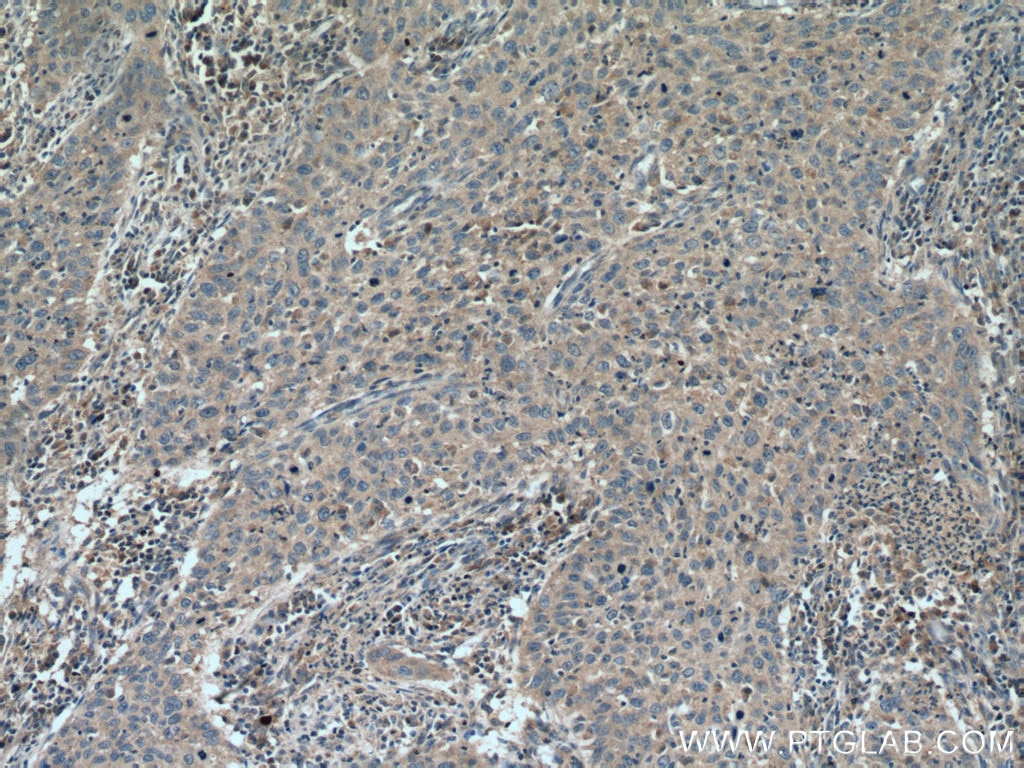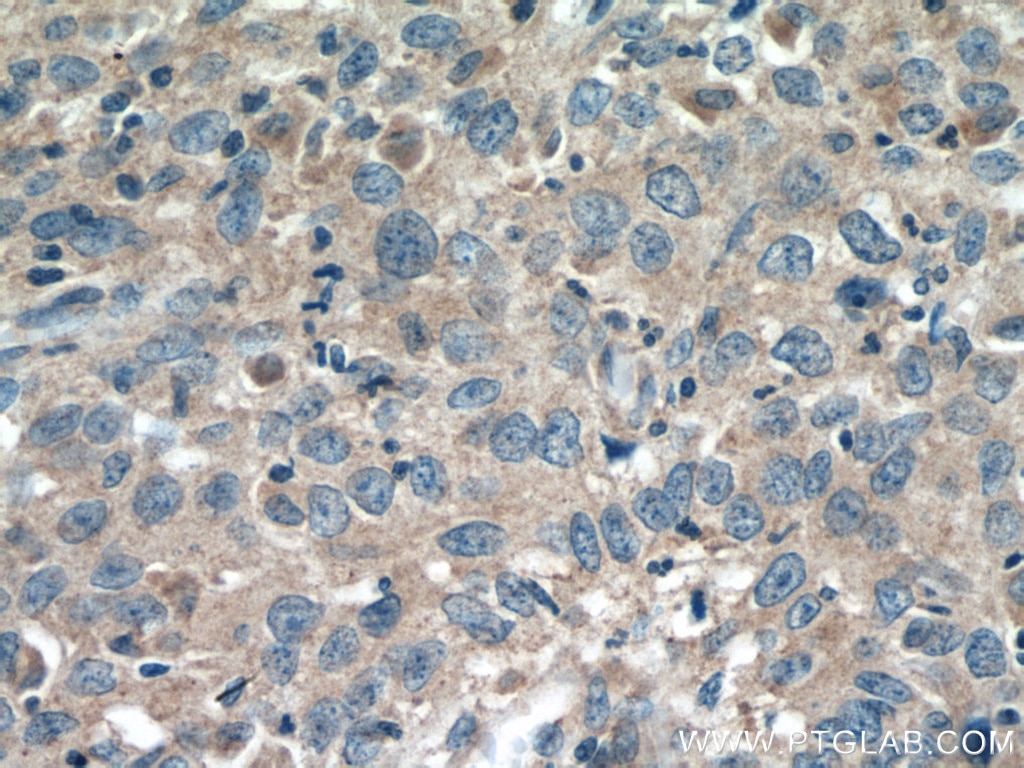Anticorps Polyclonal de lapin anti-SFRP5
SFRP5 Polyclonal Antibody for IHC, ELISA
Hôte / Isotype
Lapin / IgG
Réactivité testée
Humain
Applications
IHC, ELISA
Conjugaison
Non conjugué
N° de cat : 19177-1-AP
Synonymes
Galerie de données de validation
Applications testées
| Résultats positifs en IHC | tissu de cancer du col de l'utérus humain, tissu de cancer de la thyroïde humain il est suggéré de démasquer l'antigène avec un tampon de TE buffer pH 9.0; (*) À défaut, 'le démasquage de l'antigène peut être 'effectué avec un tampon citrate pH 6,0. |
Dilution recommandée
| Application | Dilution |
|---|---|
| Immunohistochimie (IHC) | IHC : 1:50-1:500 |
| It is recommended that this reagent should be titrated in each testing system to obtain optimal results. | |
| Sample-dependent, check data in validation data gallery | |
Informations sur le produit
19177-1-AP cible SFRP5 dans les applications de IHC, ELISA et montre une réactivité avec des échantillons Humain
| Réactivité | Humain |
| Hôte / Isotype | Lapin / IgG |
| Clonalité | Polyclonal |
| Type | Anticorps |
| Immunogène | SFRP5 Protéine recombinante Ag5715 |
| Nom complet | secreted frizzled-related protein 5 |
| Masse moléculaire calculée | 36 kDa |
| Numéro d’acquisition GenBank | BC050435 |
| Symbole du gène | SFRP5 |
| Identification du gène (NCBI) | 6425 |
| Conjugaison | Non conjugué |
| Forme | Liquide |
| Méthode de purification | Purification par affinité contre l'antigène |
| Tampon de stockage | PBS with 0.02% sodium azide and 50% glycerol |
| Conditions de stockage | Stocker à -20°C. Stable pendant un an après l'expédition. L'aliquotage n'est pas nécessaire pour le stockage à -20oC Les 20ul contiennent 0,1% de BSA. |
Informations générales
Secreted frizzled-related protein 5 (SFRP5) is an anti-inflammatory adipokine whose expression is perturbed in models of obesity and type 2 diabetes. SFRP5 is secreted by adipocytes and that it controls the micro-environment of white adipose tissue under conditions of metabolic stress (PMID: 20558665). SFRP5 gene consists of 317 amino acid residues and 3 coding exons and maps to chromosome 10q24.1 in humans. SFRP5 was initially found to be highly expressed in retinal pigment epithelium cells and moderately expressed in the pancreas. SFRP5 is involved in the pathological process of obesity, insulin resistance, dyslipidemia, inflammation, and fibrosis and is associated with obesity, T2D, and ASCVD (PMID: 31199714, PMID: 32004418).
Protocole
| Product Specific Protocols | |
|---|---|
| IHC protocol for SFRP5 antibody 19177-1-AP | Download protocol |
| Standard Protocols | |
|---|---|
| Click here to view our Standard Protocols |




